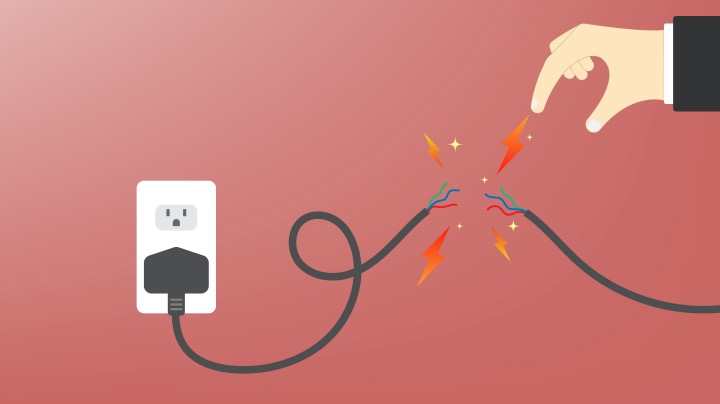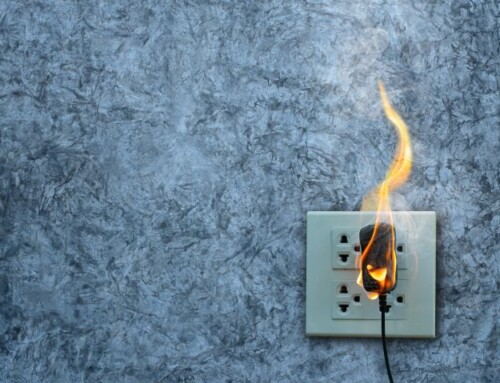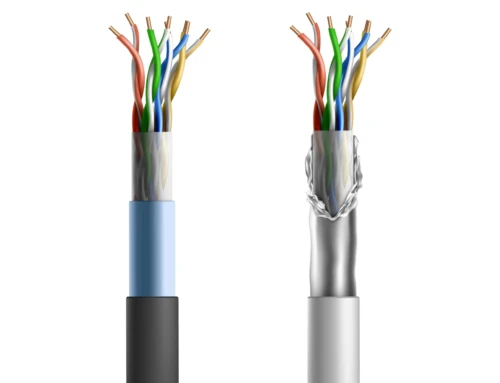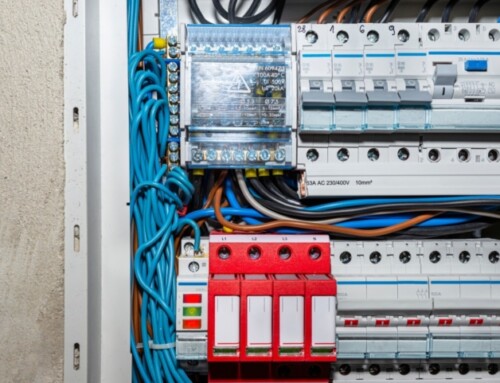Table of Contents
Electrical problems can be scary. They don’t just damage the appliances but also pose a risk to life and property. Issues like high electricity bills, flickering lights, etc., indicate an electrical problem. Let’s look at 5 common electrical problems and solutions.
-
Poor circuit protection/ No RCCB
Residual Current Circuit Breaker (RCCB) is a device that detects and prevents low voltage circuit if there is a current leak. It disconnects the load from the main supply when the circuit has residual current.
Solution: Get an RCCB installed as it gives protection against direct and indirect currents, shock, and electrical fire.
-
Grounding Issues
-
No GFCI Installed
GFCI breaks the circuit if there is an imbalance between incoming and outgoing currents. Without GFCI, there is a risk of overheating of electrical wires, shocks, burns, or an electrical fire.
Solution: Get GFCI installed if you don’t have one already.
-
Ungrounded Connections
These are connections that do not have a grounding system as an added failsafe. Grounding provides a pathway for the excessive current to flow in case of a short circuit.
Solution: Make sure all the connections are grounded and you have proper grounding system.
-
-
Lighting Problems
-
Light Bulbs Burn Out Too Frequently
If your light bulbs go out too often, it could indicate electrical problems. Bulbs can burn out if:
- Wattage is too high,
- High voltage,
- Improper air circulation,
- The bulb is fixed too tightly,
- Bad wiring on mains or circuit
Solution: If you face this problem often, check if the holder is loose. Bring in a professional to determine the root cause of Electrical Burnout.
-
Flickering Lights and Too Bright or Dim Lighting
If you notice the lights flickering or if one is brighter or dimmer than the others, there could be two reasons for that. They either consume different wattage of power or the main power panel has technical problems.
Solution: If the bulbs are of different wattage, there would be no issue, but if there is a problem in the power panel, you need to call a professional.
-
-
Electrical Shocks
You may experience electrical shocks when you turn an appliance on or off. Even if the shocks are mild, it is an indication that the appliance has an electrical problem, or there are issues with the wiring.
Solution: You can plug in another device and see if you face the same problem. If the results are reproducible, call in an electrician to fix the problem before anyone gets hurt.
-
High Electricity Bills
Some reasons why you may get a high electricity bill are:
- Damaged wiring and circuit
- Leakage in electrical systems
- Electrical devices are outdated and consume more power
Solution: You can reduce the cost of electricity bills by switching to more cost-effective devices and unplugging appliances when they are not in use as suggested by zero-waste blogger. Repairs damaged wires and identify electrical devices that may be causing power surges.
-
Electrical surges
It usually occurs due to poor electrical wiring in the house, faulty appliances, damaged power lines, or when lightning strikes. Electrical surges are common electrical problems, and they last for a split of a second. If there are frequent surges, they can damage the equipment and lower its life expectancy.
Solution: Check your electrical connections that connect the device to the home grid. Disconnect the poor quality power boards or devices from the outlet. The surges should stop; if they don’t, you must call an electrician.
-
Power sags and dips
When electrical appliances are connected to a faulty or a low-quality power grid, sags and dips occur. When you turn on the devices that are connected to the cheap or faulty power grids, they consume more power than what the device can handle. This cause sags and dips.
Solution: If you want to experience improved lighting and lower power consumption, have your power check and replace your old device with a new one.
-
Overloading
The light fixture you may be using for your high-watts bulbs or other fittings could be designed for low voltage. This violates the code, increasing the risk of melting the socket and wire insulation of the fixture due to high heat from the bulb. This can cause electrical fires.
Solution: Fit the right bulb to the right fixture. If you are unsure of the wattage the fixture can handle, it is safe to use a 60-watt or a smaller bulb.
-
Switches of light not working
A switch not working is a result of poor workmanship or poor quality of products. It can also be a fault in wiring, circuit, or outlet.
Solution: Consult an electrician for this issue.
-
An uncovered junction box
Junction boxes contain a lot of wires that are connected to each other and are designed to keep one section of wires away from the other. These boxes also protect the wires from getting damaged. An uncovered junction box increases the chances of electrocution.
Solution: Get it covered by a professional with the screws provided.
-
Overcircuited panel
Your electrical panel is designed to accommodate a certain number of circuit breakers. These breakers fit into slots. A tandem breaker looks like two switches, but it doesn’t need two slots. So, when people place tandem breakers in one slot instead of two single-pole breakers, they over-circuit the panel. An over circuited panel is a fire hazard and causes harm.
Solution: Call an electrician to replace the panel with a bigger load or add a sub-panel.
-
Tripping circuit breaker
If too many high power consuming items are drawing power from the same source, there are chances of your breakers getting tripped – it’s a good sign, though – it means your home is protected.
Solution: Reduce the number of high power-consuming appliances drawing power from the same source. Or use lower settings. If this doesn’t fix the problem, call the electrician to check the wiring and figure out what causes the tripping.
-
Backstabbed wires
Backstabbed wires are wires with holes and cuts in them, thus exposing live wires and increasing the chances of electrocution is there is direct contact with them.
Solution: Turn off your power supply and cover the cuts and holes with tape. This fix is temporary, and the situation can become hazardous when the tape comes off. So, it is best to get a new wire fixed.
-
Aluminum wiring
Aluminum is a metal and is more susceptible to oxidation when conducting electricity. So, when it comes in contact with other combustible materials like wood, plastic, etc., it can cause a fire.
Solution: Use copper instead of aluminum. Copper is cheaper and equally ductile, but it doesn’t have the oxidation properties of aluminum.
Tips for Troubleshooting Electrical Problems
Before you troubleshoot
Check whether:
- The switch is off
- The bulb is burned out
- The Residual Current Circuit Breaker is tripped
If the switch or bulb is burned out, it’s easy to troubleshoot. If the breaker is tripped, look for the tripped plug and switch it back on.
Troubleshooting
- Your safety should be first.
- Avoid working with energized wires or circuits.
- Switch off the circuit and put a mark on it so that others do not switch it on again.
- Before testing, use electric tape to insulate the open wires. You can use red or black tape to insulate a hot wire. This will help you in identifying hot wires from other wires. This is also known as hot wire flagging.
- If you don’t know anything about electrical wires and how to resolve electrical issues, don’t experiment, call an electrician.
Follow the process
- Don’t work on cables with power on. Label the circuit you are working on to make others aware that you are working on that particular circuit.
- Check all equipment connected to each cable. Disconnect the device and keep it away.
- Use an OHM meter to check the switch.
- Check if the fixture works with the help of an extra cord. If it doesn’t work, check wiring, bulbs, installation, and so on.
- A hot wire may test alright to a ground wire but may not test ok to the white neutral wire. A device won’t work if there is no neutral. Check all the neutral connections at source and also at any intersection to identify the problem.
- High wattage space heater, if used for a long time, can overheat the receptacle. If you see some stains on the receptacle where the cord is connected, there is a high possibility of wiring appended to the receptacle inside the box is burned due to overheating.
- Make sure that your connections are well made to avoid burnt wires and shorts, leading to potential fire danger.
- Ensure that your wire nuts are tight, but don’t over fix them.
As you check the circuit and other components, you should be able to identify the issue and fix it. However, if you are unsure about the issue, don’t fix it. Remember, safety comes first. Call a professional who is trained to identify electrical problems and solve them.
Contact D&F Liquidators Inc for electrical construction materials such as electrical connectors, conduit fitting, circuit breakers, junction boxes, wire cable, safety switches etc. Call us at (800) 458-9600 or drop your requirements here.

D&F Liquidators has been serving the electrical construction materials needs for more than 30 years. It is an international clearinghouse, with 180,000 square facility located in Hayward, California. It keeps an extensive inventory of electrical connectors, conduit fitting, circuit breakers, junction boxes, wire cable, safety switches etc. It procures its electrical materials supplies from top-notch companies across the globe. The Company also keeps an extensive inventory of electrical explosion proof products and modern electrical lighting solutions. As it buys materials in bulk, D&F is in a unique position to offer a competitive pricing structure. Besides, it is able to meet the most discerning demands and ship material on the same day.






